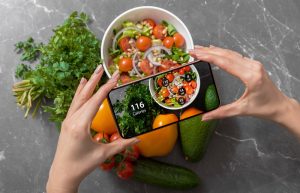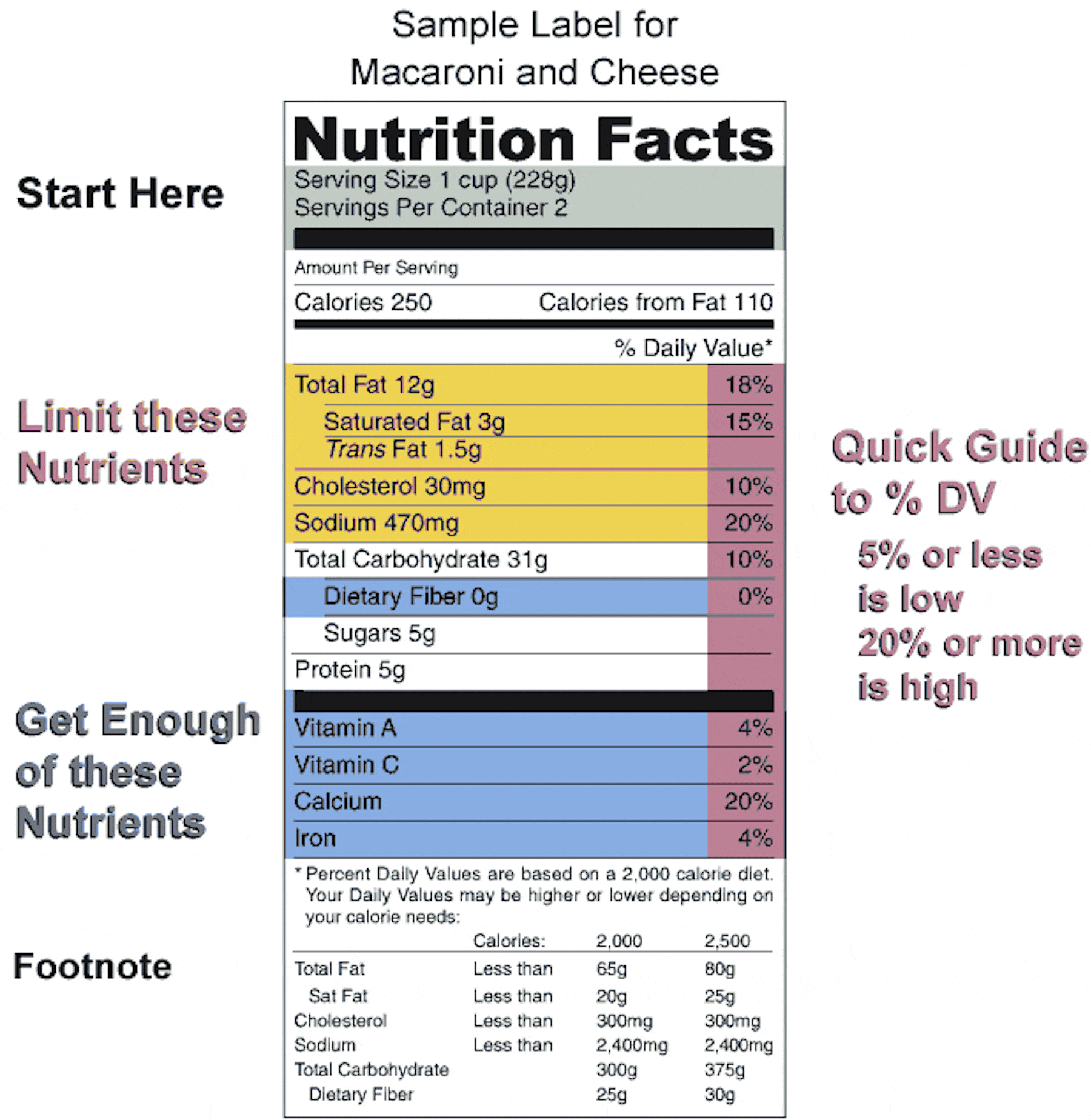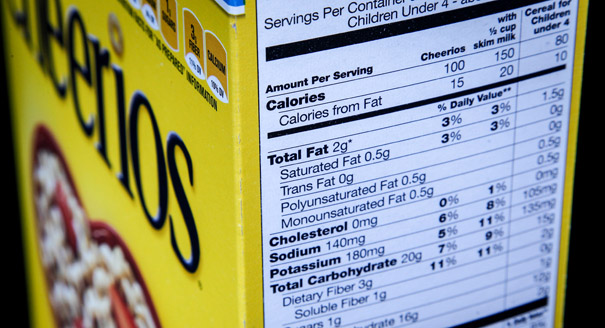38 calorie used on food labels is equal to
What is considered low carb on food labels? - Federalprism.com How to Read a Food Label 1 Backing into a Carb Count. Almost everything displayed on the Nutrition Facts panel is based on… 2 All Carbs Are Not Created Equal. To complicate matters still further,… 3 The Impact on Blood Sugar. When you look at most food labels, you won't see a number representing… 4 There is another rather sneaky aspect… Calories for Hundreds of Foods: Your Calorie Chart Database While quality of food is important for a healthy diet, quantity is also a major factor of good nutrition. Especially for anyone concerned about maintaining or losing weight, it’s a good idea to regularly review a calorie database and nutrition labels to see how much fuel you’re getting to feed your daily activity – and if it’s too much.
Calorimetry Measurement | How to Find the Heat Capacity of a ... A BTU is the amount of energy required to raise the temperature of 1 pound of water 1 degree Fahrenheit. A BTU is roughly equivalent to 1,055 J. Similarly, calories refer to the amount of energy...

Calorie used on food labels is equal to
Do Menu Calorie Counts Actually Change How We Eat? A pound of fat may roughly equal 3,500 calories, but there are many factors that determine how calories are processed in the body, including body composition, metabolism, stress levels, sleep and... Calories on the New Nutrition Facts Label | FDA - U.S. Food and Drug ... One package of food may contain more than one serving, so, if you eat two servings you would be getting two times the calories shown on the label. For example, if you ate one serving of the food... This Is How to Read a Nutrition Facts Label on the Keto Diet A low daily value for any nutrient is 5% or less, while a high daily value is 20% or more — but keep in mind that the numbers you see on the label are for the average person eating a 2000 calorie a day diet and may not translate to your diet directly if your usual calorie intake is significantly higher or lower.
Calorie used on food labels is equal to. for Hundreds of Foods: Your Calorie Chart Database Welcome to Calories.info, a food database that will help you discover the caloric content and other facts about common foods. When you use the calorie database to understand how your body gets energy out of your favorite meals and snacks, paying particular attention to the number of calories in food you’ve eaten, you’ll be empowered to make dietary choices that never leave you with guilt ... foodinsight.org › everything-you-need-to-know-abouEverything You Need To Know About Acesulfame Potassium Apr 13, 2022 · Five years later, in 1988, it was approved in the U.S. Today, it is often used in combination with other low- and no-calorie sweeteners, such as aspartame and sucralose, to provide a more sugar-like taste than acesulfame potassium provides on its own. Like other low- and no-calorie sweeteners, acesulfame potassium is intensely sweet. Difference Between Kcal and Cal - Ask Any Difference Calorie refers to the much smaller version of the same. However, in the labels that are present at the back of any packaged foods, Calorie value is written, which is equal to a kilocalorie and not calorie. One kilocalorie is larger than a calorie by 1000 times. Thus, one thousand calories are equal to one kilocalorie. Reading a food label 101 - Diets in Review Serving Size - provides you with a quantity telling you how much of this food is equal to one serving (for example 1/2 one cup = one serving). The serving size influences the number of calories and nutrients you are taking in with each serving you consume.
The Secret to Reading Nutrition Labels - Meghan Telpner The Most Important Part of a Nutrition Label. My most important advice about reading nutrition labels is to ignore the 'Nutrition Facts' panel. All you need to know about a food is in the ingredient list. Turn the package over and find that ingredient list on the side or the back. Stop Counting Calories. Here's What To Do Instead. - MSN The FDA allows the calorie content on food labels to be off by up to 20%. That means that if a food says on the label that it contains 200 calories, it could actually have anywhere between 160 and... › Calculate-Food-Calories3 Ways to Calculate Food Calories - wikiHow Aug 20, 2022 · Search for a food or ingredient. Type in the name of the item or flip through your food composition guidebook until you find the correct listing. There, you’ll see the calorie count for the USDA recommended serving size, along with other info like the values of the major macronutrients and recommended daily values (DV). Not All Calories Are Equal - A Dietitian Explains How ... - SciTechDaily Nutrition Facts food labels contain much more than just calorie counts - for good reason. In general, diets high in carbohydrates, fat or both produce a 4%-8% increase in energy expenditure, while meals high in protein cause an 11%-14% increase above the resting metabolic rate.
Kcal vs. Calories: Differences and How to Convert - Healthline 08.03.2021 · When it comes to nutrition and exercise, kilocalories (kcal) and calories equal the same amount of energy. Calories may also be expressed as kilojoules (kJ), with one calorie or kcal equaling 4.18 kJ. The truth about counting calories | Popular Science The difference between 137 and 157 calories in a serving of cashews might not sound like a lot, but it's enough to make a difference in the accuracy of a diet tracker, Melanson says. "You can ... What Is A Calorie Deficit, And Why Does It Matter? - Cheat Day Design Before we go any further, I should note that a dietary "Calorie" (like you see on a food label) is actually equal to 1,000 "calories". The word "calories" (with a lowercase C) refers to a very tiny unit of measurement, so the Calorie, or kCal, you're used to seeing is made up of 1,000 calories to make the math easier. Experts warn move to calorie-labelled menus is 'problematic' "All calories aren't equal in terms of how they are treated in the body and the effects on people's health. For example, calories in protein-rich foods will help you stay full for longer, whereas...
How to Determine the Nutritional Value of Food - FoodCrumbles Micronutrients. Keep in mind: foods are variable. Determining the nutrient content in three ways. 1) Analyze the contents in a lab. 2) Used published values from literature. 3) Calculate your nutritional value. Determining energy content is a simple calculation. Set conversion values. Calculation example.
How to Understand and Use the Nutrition Facts Label | FDA - U.S. Food ... That is two times the calories and nutrients shown in the sample label, so you would need to double the nutrient and calorie amounts, as well as the %DVs, to see what you are getting in two...
foodinsight.org › everything-you-need-to-know-aboutEverything You Need To Know About Monk Fruit ... - Food Insight Oct 27, 2021 · Monk fruit sweeteners range from being 150-200 times sweeter than sugar, and as such only small amounts are needed in a product to equal the sweetness provided by sugar. Monk fruit sweeteners can be used in a wide range of beverages and foods like soft drinks, juices, dairy products, desserts, candies and condiments.
The Basics of the Nutrition Facts Label - Academy of Nutrition and ... Step 4: Check Out the Nutrition Terms. Low calorie: 40 calories or less per serving. Low cholesterol: 20 milligrams or less and 2 grams or less of saturated fat per serving. Reduced: At least 25% less of the specified nutrient or calories than the usual product. Good source of: Provides at least 10 to 19% of the Daily Value of a particular ...
What Do Calories Mean in Food and Exercise? - Verywell Fit 12.10.2021 · Understanding Calories in Food . Calories in food are grouped as fats, alcohol, carbohydrates, and proteins. Different nutrients have more or fewer calories packed into the same weight (higher or lower calorie density). Nutrition labels in the U.S. use these rules of thumb: …
Calorie Calculator - Calories need to Maintain, Lose/Gain Weight Remember that 1 kcal is equal to 1,000 cal. Both terms ‘large calorie’ and ‘small calorie’ are frequently used interchangeably; this is misleading. However, the calorie content that is listed on food labels refers to kilocalories. A 250-calorie chocolate bar actually packed with 250,000 calories. Fast Facts On Calories:
13 Types Of Sweeteners Ranked Worst To Best - Mashed.com 13. High-fructose corn syrup. Chokniti Khongchum/Shutterstock. Derived from corn, high-fructose corn syrup is a manufactured liquid syrup sweetener that is typically added to packaged foods and beverages like soft drinks, flavored yogurts, condiments, white bread, and other highly processed foods. While it's best to limit all sources of sugar ...
thegeriatricdietitian.com › 5-best-high-calorie-drinks5 Best High Calorie Drinks - The Geriatric Dietitian Apr 14, 2020 · High calorie drinks are a great way to promote weight gain and prevent unintended weight loss. This article dives deep into high calorie drinks and includes our top 5 picks for the best high calorie drink options! Low vs. High Calorie Drinks. Let’s talk low vs. high calorie drinks. When it comes to calories, not all drinks are created equal.
› article › 311197-how-manyHow Many Calories Does One KCAL Equal? | livestrong Jan 30, 2020 · According to HyperPhysics of Georgia State University, the dietary Calorie (with a capital C) is equivalent to a kilocalorie, which is equivalent to 1,000 calories.You can think of it in simpler terms: The Calories labeled on food nutrition facts are, in fact, kilocalories, explains the USDA National Agricultural Library.
How Many Calories Does One KCAL Equal? | livestrong 30.01.2020 · According to HyperPhysics of Georgia State University, the dietary Calorie (with a capital C) is equivalent to a kilocalorie, which is equivalent to 1,000 calories.You can think of it in simpler terms: The Calories labeled on food nutrition facts are, in fact, kilocalories, explains the USDA National Agricultural Library.One kilocalorie is equivalent to 1 Calorie.
3 Ways to Calculate Food Calories - wikiHow 20.08.2022 · Search for a food or ingredient. Type in the name of the item or flip through your food composition guidebook until you find the correct listing. There, you’ll see the calorie count for the USDA recommended serving size, along with other info like the values of the major macronutrients and recommended daily values (DV).
Carb Counting: Diabetes, Apps, and Methods - Verywell Health A carbohydrate choice should equal 80 calories, 15 grams of carbohydrate, and 0 grams of fat. That doesn't mean that every carbohydrate choices is the same serving size. For instance, each of these servings of food is equivalent to one carbohydrate choice: 3 cups of popcorn 1 slice of bread (1 ounce) 1/2 cup cooked pasta
Counting calories: Get back to weight-loss basics - Mayo Clinic In the past, research found about 3,500 calories of energy equaled about 1 pound (0.45 kilogram) of fat. So researchers thought burning or cutting 500 calories a day led to losing 1 pound a week. But this isn't true for everyone. In general, if you cut about 500 calories a day from your usual diet, you may lose about ½ to 1 pound a week.
Why Calories Don't Count - Stanford University February 7 12:00 pm - 1:00 pm. Calorie counting has become a pervasive part of the weight loss industry. As consumers, we encounter calories on our food labels and restaurant menus, and we often treat these numbers as gospel, obsessively counting and cutting to reach some magical threshold. But what if there is more to the story than just a ...
Food Label Reading - What You Need to Know - Drugs.com Calories per Gram:Many labels tell you how many calories are in each gram of the major parts of food. Fats contain 9 calories per gram, carbohydrates contain 4, and proteins contain 4. High fat foods can lead to weight gain because fats have more than twice the calories of other types of food.
Nutrition Facts labels for food processors - Product Center Any packaged food product, except meat, that is manufactured by a company with $500,000 or less in annual sales is generally exempt from providing a Nutrition Facts label, unless the product makes some type of health or nutrition claim. A claim could be something such as the food is "low in fat" or "high in fiber.".
What Are Calories? | Live Science The Acceptable Macronutrient Distribution Range (AMDR) within the Dietary Guidelines for Americans details how many calories should come from carbohydrates, fats, and proteins each day, in order to...
5 Best High Calorie Drinks - The Geriatric Dietitian 14.04.2020 · High calorie drinks are a great way to promote weight gain and prevent unintended weight loss. This article dives deep into high calorie drinks and includes our top 5 picks for the best high calorie drink options! Low vs. High Calorie Drinks. Let’s talk low vs. high calorie drinks. When it comes to calories, not all drinks are created equal.







/arc-anglerfish-arc2-prod-dmn.s3.amazonaws.com/public/CNNQ32KCF37G4KEE2S3HI7D2LI.jpg)




Post a Comment for "38 calorie used on food labels is equal to"